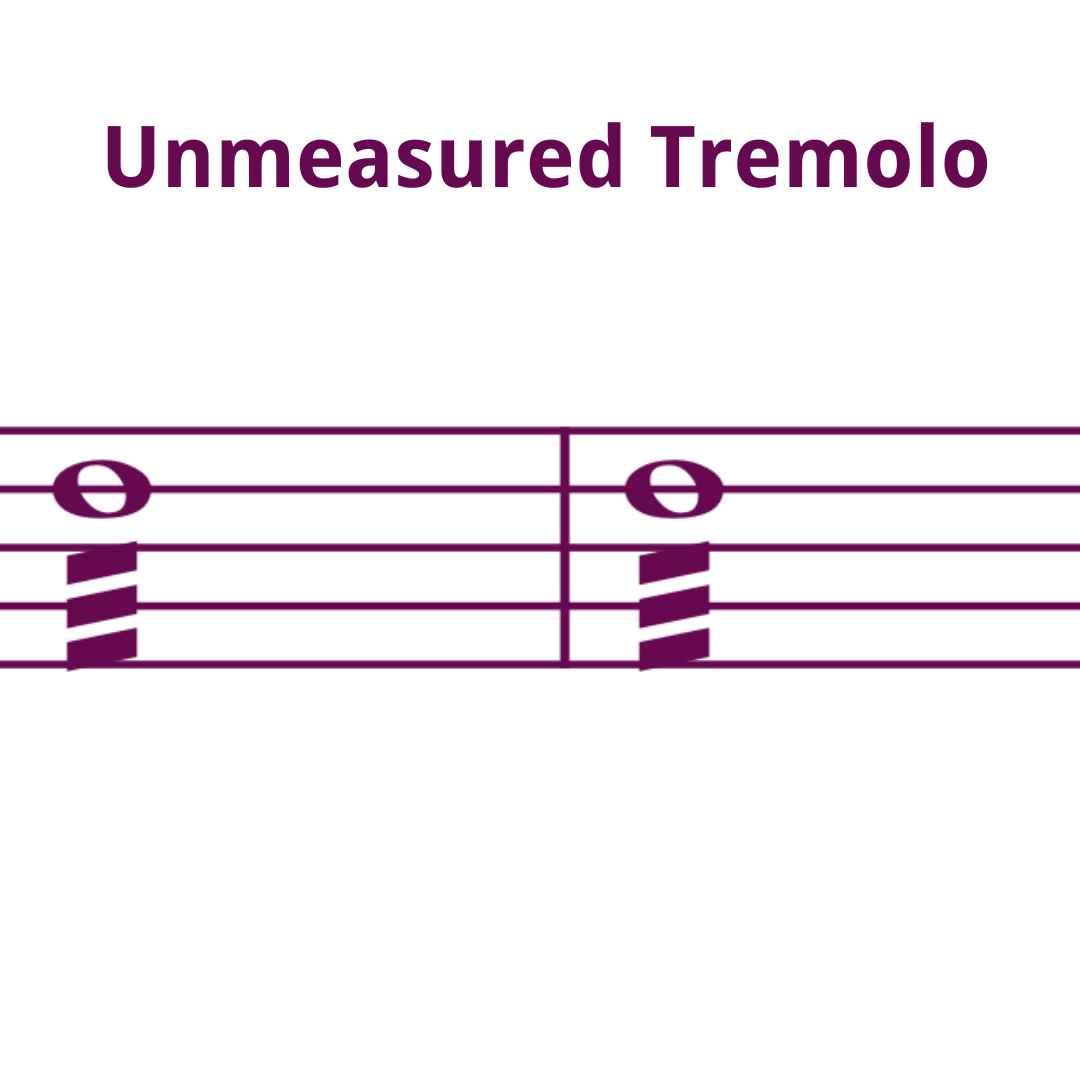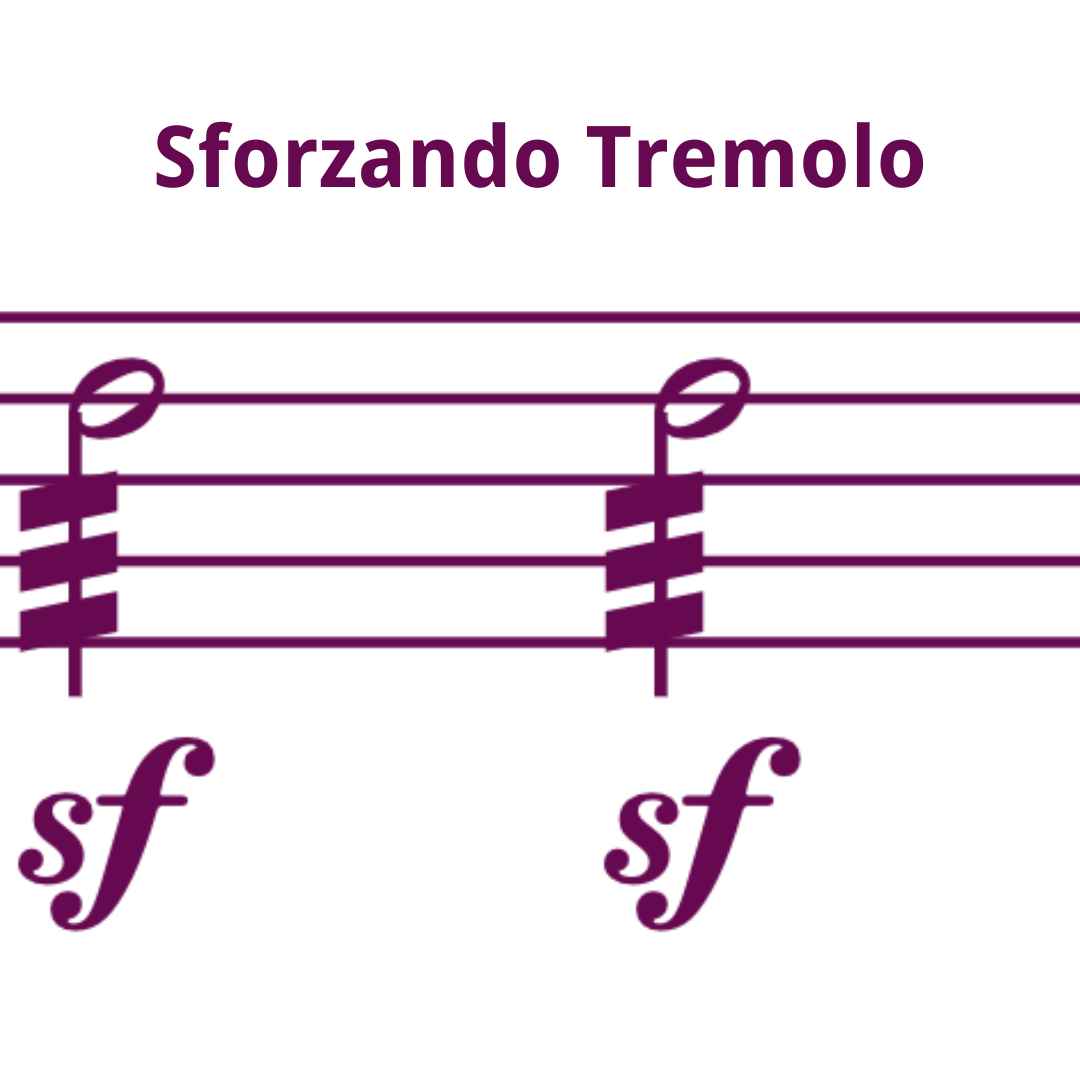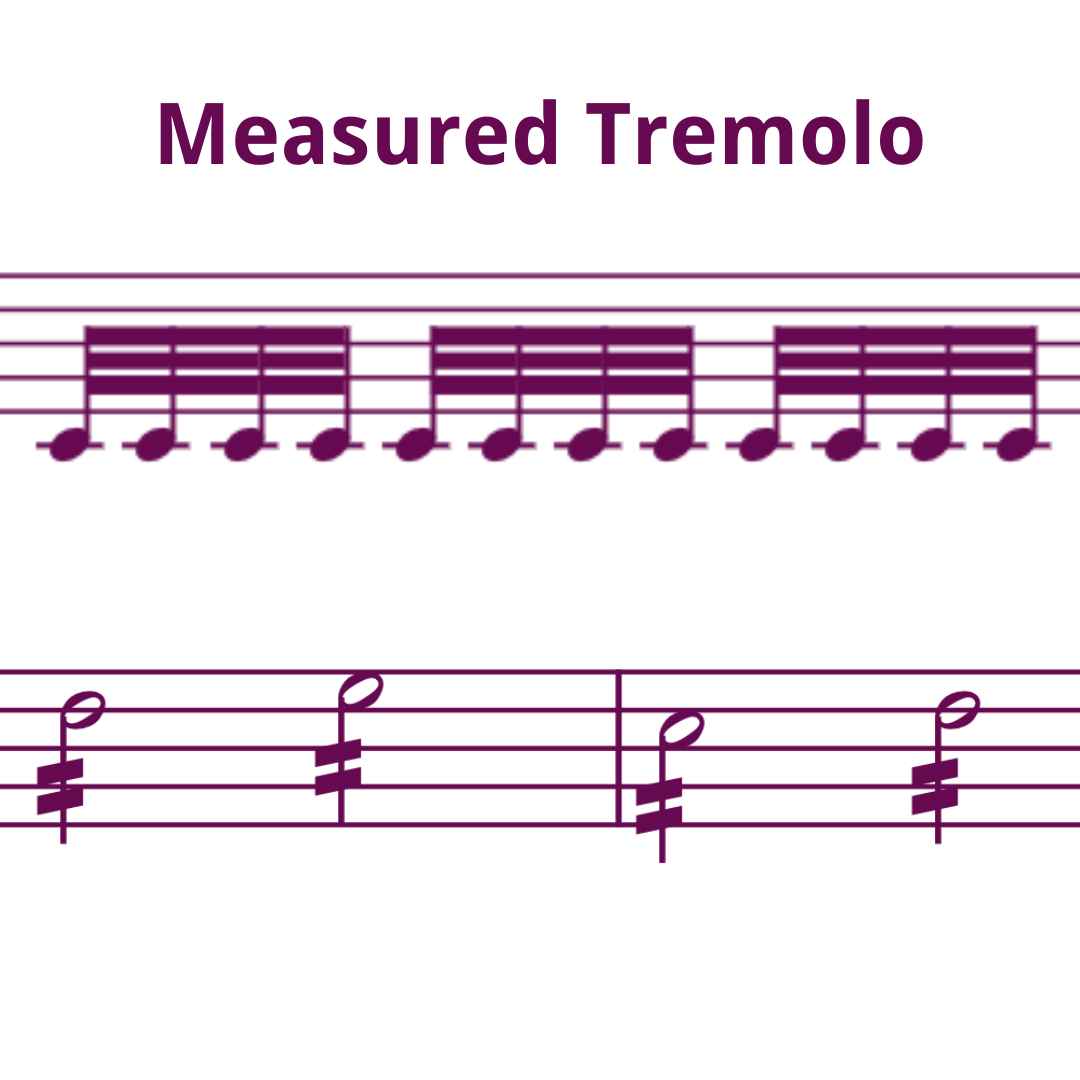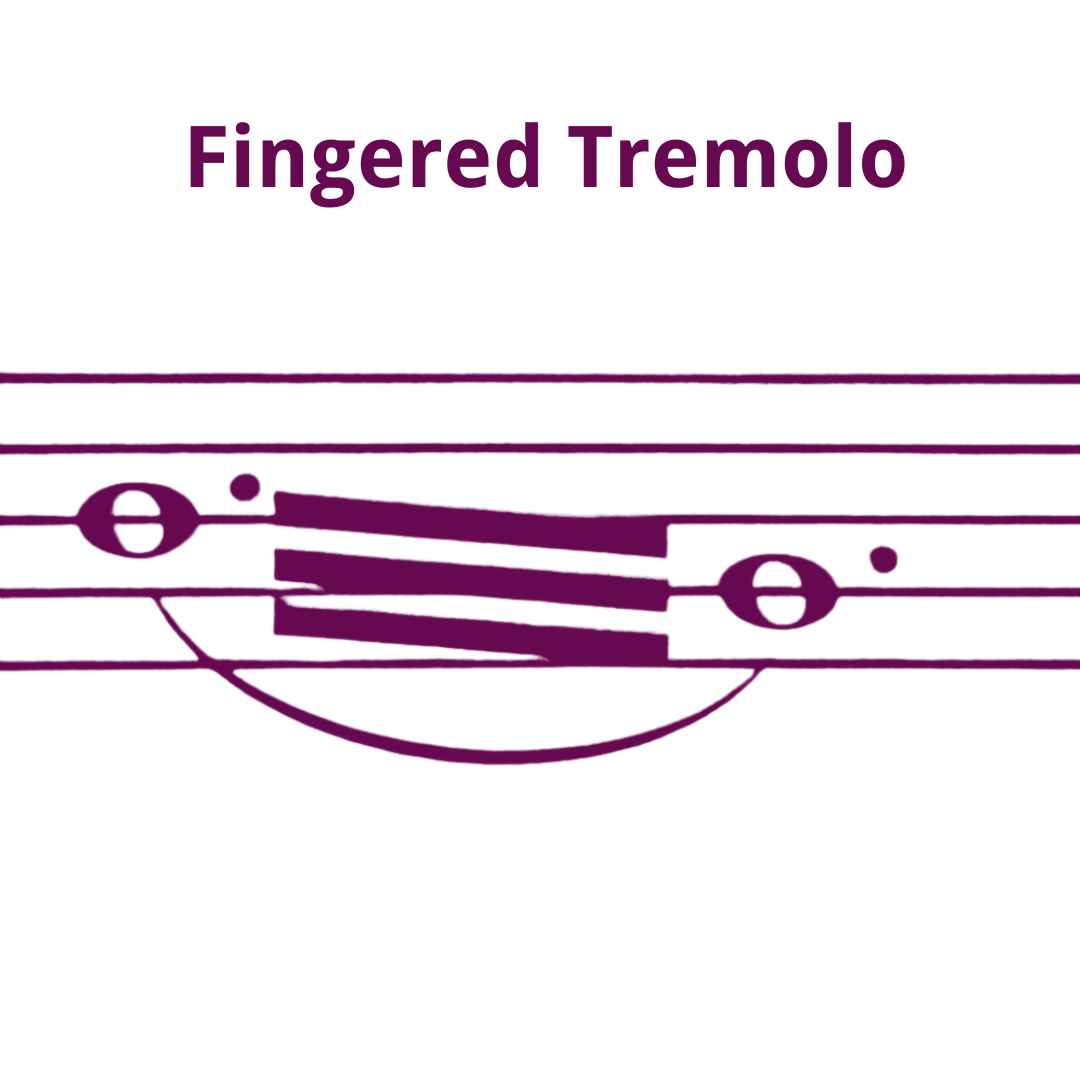How to Play Tremolo on the Violin
Tremolo is one of the most fun violin bowing techniques!
As long as you have your basics covered, tremolo is easy to play and always adds excitement and drama to the music. Tremolo is particularly found in orchestral music. It is a very rapid detaché stroke typically done at the tip of the bow. Depending on the context, it creates a shimmering, mysterious, or triumphant effect.
There are three types of tremolo: unmeasured, measured, and fingered
All tremolo is notated by putting slashes through the beams of the notes. If there are three slashes through the stems, it means to play small detachè strokes as quickly as possible. This is unmeasured tremolo. A variant of this is a sforzando tremolo that starts with a fast accented down bow to the tip followed by an unmeasured tremolo.
Measured tremolo means dividing a note into a specific number of shorter notes. For example, if you see one slash through a half note, it means play four eighth notes. Two slashes mean eight sixteenth notes. It gets a bit fuzzy with quarter notes: two slashes can either mean sixteenth notes or unmeasured tremolo. At that point, it depends on the musical context and ultimately the wish of the conductor.
Fingered tremolo sounds similar to a trill, but it is notated differently. The bow just plays one long note, but the fingers rapidly alternate between two notes. This creates a very shimmery, mysterious sound. Fingered tremolo can be measured or unmeasured. One very important tip is that you always play the two notes on the same string rather than trying to alternate between strings.
Tremolo in violin sheet music




Difficulties in violin tremolo
It doesn’t seem that complicated, so what are some difficulties people encounter when playing tremolo? The biggest issue for most students is tension. The hand and wrist move quickly while the whole arm stays relaxed. It is easy to just start shaking the whole arm, but over long periods of time this is tiring and perhaps even dangerous. Instead of jumping straight into fast tremolo, build up to it gradually.
Start by placing the bow on the string at the tip (E string is easiest at first) and notice how your arm feels. Is it relaxed, or are there areas of tension? It is a fact that no matter how tense you are, you can always find a place in your body that is relaxed and go from there. It might help to put your elbow against a wall in order to isolate the wrist and arm movement. Start by playing quarter notes to become comfortable with the movement, then double the tempo each time. So eighth notes, sixteenths, etc. If the tremolo is unmeasured, don’t worry about the exact number of notes, just play as fast as possible. A good trick for not getting tired is to only keep your thumb, index, and middle fingers on the bow.
Examples of different types of tremolo
Unmeasured Tremolo: Tchaikovsky’s The Nutcracker
Measured Tremolo: Beethoven’s Coriolanus Overture
Fingered Tremolo: Sibelius’ Violin Concerto in D Minor
Improve your violin bowing technique
Enjoy my FREE mini Masterclass 5 Bowing Secrets to Create a Professional Sound on the Violin

Hi! I'm Zlata
Classical violinist helping you overcome technical struggles and play with feeling by improving your bow technique.
In the fingered tremolo example, the tremolo is not in the solo violin but rather in the section violins who can be seen in the background. Fingered tremolo notation can be confusing in sheet music if you have never seen it before. For example, you might see two half notes connected with two dashes. How many beatles is that supposed to be? That counts as two beats, because it means you alternate (similar to trilling) between the two notes for two beats. This stumps players when they see two whole notes in one measure connected by dashes and wonder how they are supposed to play eight beats!
All three types of tremolo are very common orchestral bowing techniques, so I hope this article helps you feel more prepared at your next rehearsal!


0 Comments